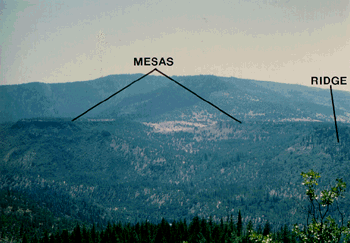Geology, Petrology, and Geochemistry of a Portion of the High Cascades
in Southern Oregon-Northern California, South of the Klamath River
Gorge
Jennifer McIntosh
Department of Geology, Whitman College, Walla Walla, WA 99362
The Secret Spring field area, south of the Klamath River gorge on
the Oregon-California border, is part of the High Cascades, a volcanic
region active since the mid-Miocene. Extrusive igneous rocks, volcaniclastic
sediments, and pyroclastic flow deposits in the area have been dated
at 19 to 4 Ma. The volcanic deposits are basaltic to andesitic with
varying degrees of secondary hydrothermal alteration. At least one
lava flow is related to the ca. 14 Ma Secret Spring volcano, remnants
of which are located on the eastern side of the Secret Spring field
area. Several andesitic dikes intrude volcanic deposits on the northern
slope of a prominent mesa in the area. The dikes are unconformably
overlain by a 4.4 +- 0.4 Ma mesa-capping basalt porphyry. The youngest
pyroclastic flow deposit in the area, the 17.6 +-0.6 Ma lithic vitric
tuff is most likely related to a pyroclastic unit north of the Klamath
River gorge.

Return to the Geology Department
homepage
Return to the Whitman College homepage
|